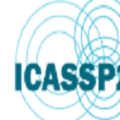This paper reports on the design and outcomes of the ICASSP SP Clarity Challenge: Speech Enhancement for Hearing Aids. The scenario was a listener attending to a target speaker in a noisy, domestic environment. There were multiple interferers and head rotation by the listener. The challenge extended the second Clarity Enhancement Challenge (CEC2) by fixing the amplification stage of the hearing aid; evaluating with a combined metric for speech intelligibility and quality; and providing two evaluation sets, one based on simulation and the other on real-room measurements. Five teams improved on the baseline system for the simulated evaluation set, but the performance on the measured evaluation set was much poorer. Investigations are on-going to determine the exact cause of the mismatch between the simulated and measured data sets. The presence of transducer noise in the measurements, lower order Ambisonics harming the ability for systems to exploit binaural cues and the differences between real and simulated room impulse responses are suggested causes
翻译:暂无翻译




